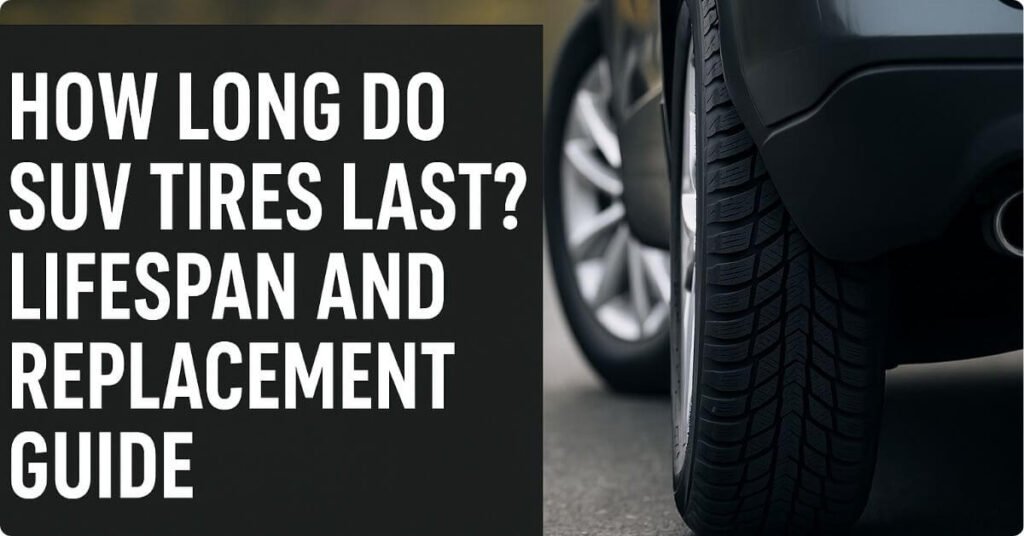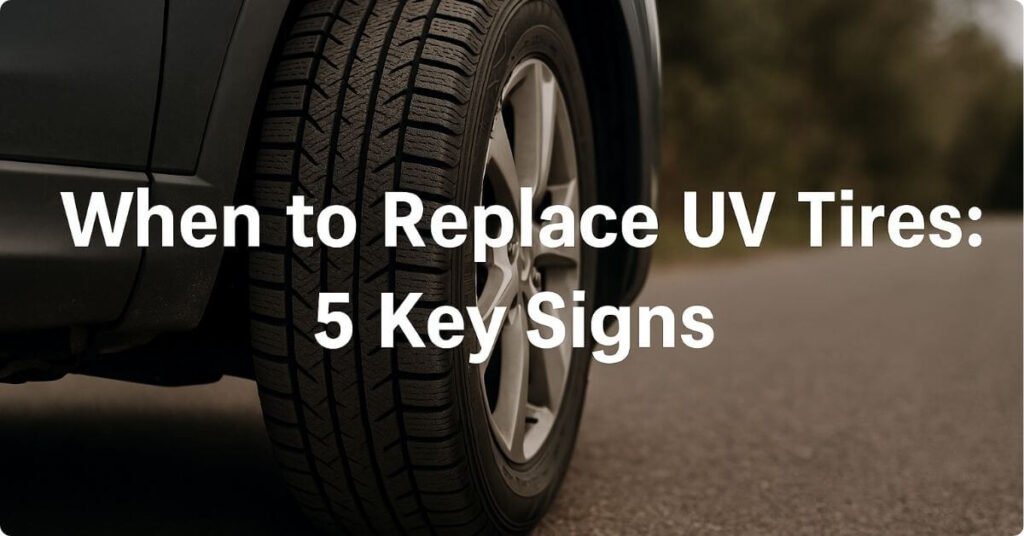
When it comes to maintaining your SUV, one question many vehicle owners often ask is, “How many miles do SUV tires last?” Knowing the lifespan of your tires is crucial, not only for saving money but also for ensuring your safety on the road. This guide will provide you with essential information about tire longevity, factors that affect tire life, and how to maximize their performance.
By following expert advice and maintaining your tires properly, you can extend their lifespan and ensure optimal safety and performance.
Why Tire Mileage Matters for SUV Owners
Tires are a critical component of your SUV’s safety, handling, and overall performance. When your tires are worn, they lose traction, which can increase stopping distance and make it more challenging to handle your vehicle, particularly in bad weather conditions. Regularly monitoring your tire condition and knowing when to replace your tires is vital to prevent accidents and avoid expensive repairs.
On average, SUV tires can last anywhere from 30,000 to 80,000 miles. However, various factors influence how long your tires will last. Let’s explore these factors so you can make informed decisions about tire maintenance and replacements.
Key Factors Affecting the Lifespan of SUV Tires
1. Tire Type and Quality
The type and quality of your tires play a significant role in determining how long they will last. Different tire types are designed for specific purposes, and each has its expected mileage range:
- All-season tires: 50,000 to 70,000 miles
- Highway touring tires: 60,000 to 80,000 miles
- Performance tires: 30,000 to 50,000 miles
- All-terrain tires: 40,000 to 60,000 miles
- Mud-terrain tires: 30,000 to 50,000 miles
Additionally, higher-quality tires from well-established brands like Michelin, Bridgestone, and Goodyear generally last longer when maintained properly. On the other hand, cheaper alternatives may wear out faster, even though they may offer short-term savings.
2. Driving Habits
Your driving style plays a direct role in tire wear. Here are some habits that can extend or shorten the lifespan of your tires:
- Smooth driving: Steady driving with minimal sudden acceleration or braking preserves tire life.
- Aggressive driving: Fast starts, sharp turns, and frequent high-speed driving generate excess heat, causing faster wear and tear.
- Frequent off-roading: If you frequently drive on uneven terrain, like rocks and mud, your tires will wear faster.
By adopting smoother driving habits, you can significantly extend the life of your tires.
3. Road Conditions
The types of roads you drive on have a significant impact on your tire mileage. Consider the following:
- Paved roads: Well-maintained highways and smooth surfaces put less stress on tires, allowing for more even wear.
- Urban environments: Stop-and-go traffic, potholes, and frequent turns cause tires to wear out more quickly.
- Off-roading: If you regularly engage in off-roading or drive over rough terrain, the tire tread will wear out faster, particularly with all-terrain or mud-terrain tires.
Driving on better roads or avoiding excessive off-roading can help maintain tire health.
4. Climate and Weather Conditions
Your local climate also affects tire longevity:
- Hot climates: Heat can cause the rubber in your tires to dry out, which leads to cracking and quicker degradation.
- Cold weather: In colder climates, tires may stiffen, making them less flexible and reducing their effectiveness, especially if you’re not using winter tires.
- Rain and snow: Wet conditions require tires with sufficient tread depth to maintain traction. Tires designed for specific weather conditions (e.g., snow tires) are essential for safety.
Using tires suited for the weather conditions in your area helps protect them from unnecessary wear and extends their lifespan.
5. Proper Tire Maintenance
Regular tire maintenance is essential for maximizing tire longevity. Here are some best practices:
- Check tire pressure: Under- or over-inflated tires wear unevenly, so check your tire pressure at least once a month and ensure it matches your vehicle’s specifications.
- Rotate tires regularly: Tire rotations every 6,000–8,000 miles help ensure even wear across all four tires.
- Balance and align your wheels: Misalignment can lead to uneven tire wear. Regular wheel balancing and alignment checks will prevent unnecessary tread loss.
- Inspect your tires: Regularly inspect your tires for visible damage, such as cuts, punctures, or excessive tread wear. Also, check tread depth using the penny test.
By taking care of your tires, you can significantly extend their lifespan.
Average Mileage for Popular SUV Tire Types
To give you an idea of what to expect, here is the average mileage for different tire types under typical driving conditions with regular maintenance:
| Tire Type | Mileage Range | Example Models |
| All-season | 50,000–70,000 | Michelin Defender LTX M/S |
| Highway Touring | 60,000–80,000 | Bridgestone Turanza QuietTrack |
| Performance | 30,000–50,000 | Bridgestone Dueler H/P Sport |
| All-terrain | 40,000–60,000 | Goodyear Wrangler DuraTrac |
| Mud-terrain | 30,000–50,000 | BFGoodrich Mud-Terrain T/A KM3 |
It’s important to note that tire mileage estimates can vary based on your specific driving habits, road conditions, and maintenance practices.
What Is the Average Mileage on SUV Tires?
The average lifespan of SUV tires generally falls within the range of 50,000 to 60,000 miles under standard driving conditions. However, this figure may differ depending on factors such as tire type, weather, and driving habits. Always consult your tire manufacturer’s warranty for more specific information about the expected mileage of your tires.
When to Replace SUV Tires: Key Signs
Even if you’re within the typical mileage range, it’s essential to know when it’s time to replace your SUV tires. Here are five key signs that indicate your tires may need replacing:
- Tread wear: Use the penny test—insert a penny into the tread with Lincoln’s head down. When the top of his head is visible, it means the tread is worn down too much, signaling that it’s time to replace the tires.
- Cracks and dry rot: Over time, exposure to the sun and elements can dry out tire rubber, leading to visible cracks. These can compromise tire integrity.
- Bulges or bubbles: Bulges or bubbles indicate internal tire damage, which can be a safety hazard.
- Strange vibrations: Unusual vibrations while driving might signal uneven wear, tire damage, or imbalance.
- Handling issues: If your vehicle pulls to one side or feels unstable, the tires may be to blame.
If you notice any of these signs, it’s a good idea to consult a professional mechanic or tire shop for further inspection.
How to Maximize Tire Mileage
To ensure that your SUV tires last as long as possible, follow these expert-backed tips:
- Maintain proper tire pressure: Always ensure your tires are inflated to the correct pressure to prevent uneven wear.
- Rotate your tires: Perform tire rotations every 6,000 to 8,000 miles to ensure even wear.
- Check wheel alignment and balance: Ensure your wheels are properly aligned to avoid uneven tire wear.
- Drive smoothly: Avoid sudden stops, sharp turns, and rapid acceleration to reduce unnecessary strain on your tires.
- Don’t overload your vehicle: Excess weight increases pressure on your tires, leading to faster wear.
- Use seasonal tires: Switch to snow tires in winter and store them properly in the off-season.
Additionally, always keep an eye on your tire warranty, as some manufacturers offer pro-rated replacements if your tires wear out prematurely.
Final Thoughts
The lifespan of SUV tires generally ranges from 30,000 to 80,000 miles, depending on factors such as tire type, driving habits, and climate. Regular maintenance and mindful driving are essential to maximizing your tires’ lifespan.
Your vehicle’s tires are the sole connection between it and the road, making their role crucial beyond measure. If you’re unsure about the condition of your tires, seek professional advice to ensure your vehicle remains safe on the road.


